The Junior First Aid Badge teaches girls essential emergency response skills, empowering them to care for the sick or injured. A cornerstone of Life Skills development.
1.1 Overview of the Badge and Its Importance
The Junior First Aid Badge is a foundational award that equips girls with critical emergency response skills. It emphasizes preparedness, teaching them to care for others in need. This badge is part of the Life Skills pillar, fostering confidence and responsibility. By earning it, girls learn to act decisively in emergencies, making it a cornerstone of Girl Scout safety education. The badge’s importance lies in its practical application, ensuring girls are ready to help in real-world situations, from minor injuries to life-threatening crises. It’s a legacy badge, maintaining a long tradition of empowering girls to save lives and support their communities.
1.2 Brief History of the Junior First Aid Badge in Girl Scouts
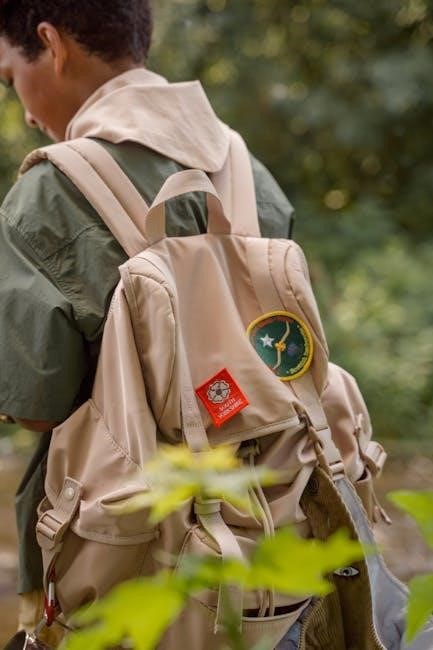
The Junior First Aid Badge has a rich history within Girl Scouts, dating back decades. Originally introduced to teach girls basic emergency care, it has evolved to include modern techniques. The badge reflects the organization’s commitment to preparing girls for life’s challenges; Over time, requirements have been updated to incorporate new safety standards and practices, ensuring relevance. Its legacy continues to inspire young members to become capable and compassionate individuals, ready to make a difference in their communities. This badge remains a vital part of Girl Scout traditions, emphasizing the importance of health and safety education.
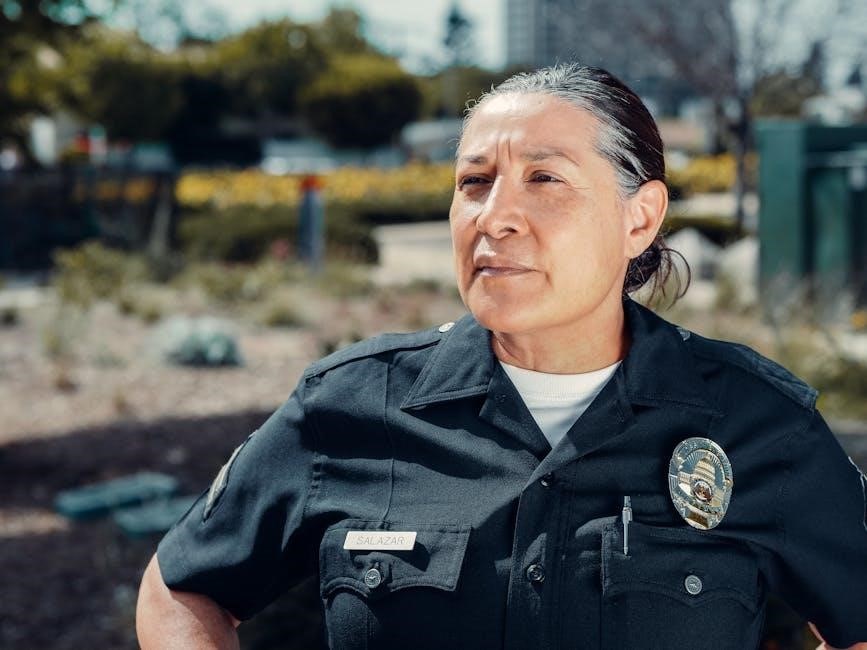
Key Requirements for Earning the Junior First Aid Badge
To earn the Junior First Aid Badge, girls must learn emergency steps, call 911, create a first aid kit, handle urgent issues, and care for the sick or injured.
2.1 Step 1: Learn the First Steps to Take in an Emergency
The first step to earning the Junior First Aid Badge is understanding the initial actions to take in an emergency. Girls learn the Check, Call, Care framework: assessing the situation, calling 911, and providing basic care. This step emphasizes recognizing emergencies, staying calm, and knowing when to act. Activities include creating posters or charts to visualize these steps and role-playing scenarios to practice responses; Understanding these fundamental actions prepares girls to respond confidently in real-life situations, laying the groundwork for more advanced first aid skills. This step is crucial for building a strong foundation in emergency preparedness and care.
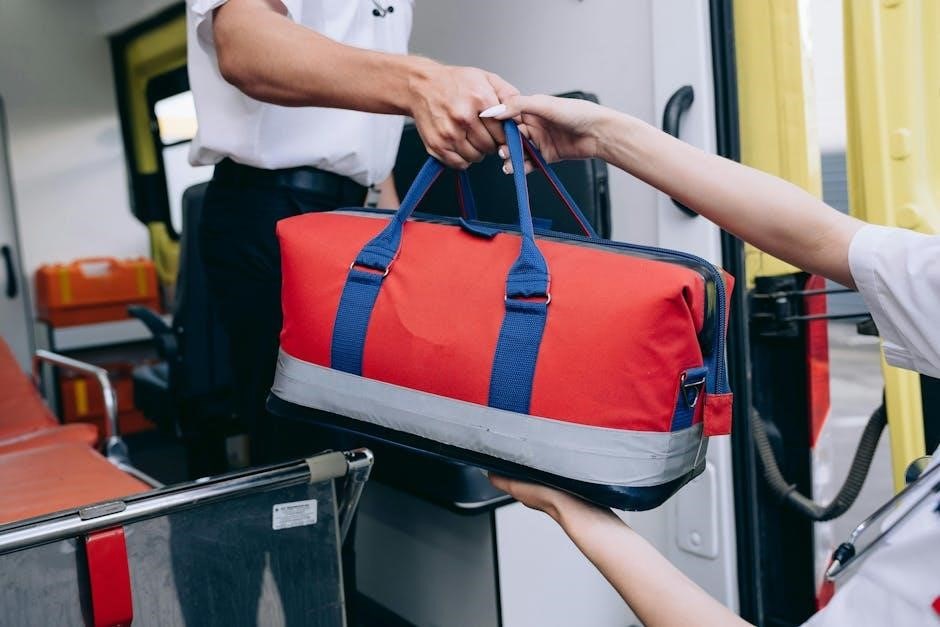
2.2 Step 2: Understand How to Call 911 and Communicate Effectively
In this step, girls learn the proper way to call 911 and communicate clearly in emergencies. They practice staying calm, providing essential details, and following dispatcher instructions. Activities include role-playing scenarios where girls simulate calling 911 and explaining the situation effectively. Understanding this step ensures they can seek help promptly and convey critical information. This skill is vital for ensuring emergencies are handled efficiently, making it a cornerstone of the Junior First Aid Badge requirements. Mastery of this step builds confidence in their ability to act decisively in critical moments.
Girls learn to assemble a portable first aid kit, essential for emergencies; They include items like bandages, antiseptics, gloves, and a first aid manual. The kit should be compact and easily accessible. Activities involve creating kits for home or car use, teaching girls to prepare for unexpected situations. This step emphasizes practical readiness and responsibility. By building their own kits, girls gain hands-on experience in first aid preparedness, a key component of the Junior First Aid Badge. This skill fosters self-reliance and ensures they can provide immediate care when needed. It’s a fundamental part of their emergency training. This step focuses on teaching girls how to respond to urgent medical situations. They learn to recognize signs of serious injuries, such as heavy bleeding or broken bones, and understand when to call for professional help. Girls are guided on how to stabilize injuries, apply pressure to wounds, and use items from their first aid kit effectively. They also practice handling scenarios like burns, sprains, or fractures. The goal is to build confidence in addressing emergencies calmly and responsibly. By mastering these skills, girls are better prepared to provide immediate care until medical professionals arrive. This step is crucial for developing practical first aid expertise. This final step teaches girls how to provide ongoing care for someone who is unwell or injured. They learn to monitor vital signs, keep the person comfortable, and administer basic care until professional help arrives. Girls practice creating a safe environment, using appropriate hygiene, and reassuring the individual to reduce stress. The focus is on compassionate and attentive care, ensuring the girl’s actions do not cause further harm. This step reinforces the importance of empathy and responsibility in helping others, completing the foundation needed to earn the Junior First Aid Badge. Engage in role-playing emergency scenarios, invite guest speakers like first responders, and create posters or charts for the “Check, Call, Care” steps. These hands-on activities build confidence. Role-playing emergency scenarios is a dynamic way for girls to practice first aid skills. Activities include simulating injuries, accidents, and illnesses, teaching them to remain calm and act decisively. By acting out real-life situations, such as burns, cuts, or broken bones, girls gain hands-on experience. Leaders guide them through scenarios, emphasizing the “Check, Call, Care” approach. This method builds confidence and ensures they know how to respond effectively in crises. Role-playing also fosters teamwork, as girls work together to assess and address pretend emergencies, preparing them for genuine situations. Inviting guest speakers, such as first responders and medical professionals, enriches the learning experience for Junior Girl Scouts. These experts share real-life stories and practical advice, helping girls understand emergency protocols and first aid techniques. Speakers demonstrate how to use first aid kits and explain the importance of quick, effective communication. They also discuss their roles in saving lives, inspiring girls to consider careers in healthcare or emergency services. This interaction provides girls with valuable insights and reinforces the skills they need to earn their badge, making the experience both educational and engaging. It bridges theory with real-world application. Creating posters or charts for the “Check, Call, Care” steps is a hands-on way for girls to visualize and remember emergency procedures. Using bright colors and clear headings, they can illustrate each step: Check the scene for safety, Call 911, and Care for the injured. Girls can draw scenarios or use index cards to brainstorm accidents, then categorize them under each step. This activity reinforces the practical application of first aid skills and helps girls feel more confident in emergencies. It also encourages teamwork and creativity while preparing them to earn their badge. The visual reminders serve as a useful reference for future use. The Junior First Aid Badge Pamphlet and volunteer guides offer step-by-step instructions and worksheets to help girls complete requirements. Online tutorials and videos provide visual learning aids.
The Junior First Aid Badge Pamphlet is an essential resource, providing detailed steps for earning the badge. It includes activities, tips, and clear instructions to guide girls through each requirement. The pamphlet is designed to be user-friendly, with a three-hole punched format for easy organization. Each girl receives her own copy, ensuring personalized learning. Topics covered range from emergency preparedness to basic first aid techniques. The pamphlet also emphasizes the importance of Check, Call, Care in emergency situations, helping girls develop practical skills they can use in real-life scenarios. This resource is a cornerstone for a successful badge-earning experience. Volunteer guides and worksheets are invaluable tools for troop leaders and girls alike. These resources provide structured activities and exercises to help complete badge requirements. worksheets include scenarios, quizzes, and step-by-step instructions for skills like creating a first aid kit or understanding emergency protocols. Volunteer guides offer tips for facilitating discussions and hands-on training, ensuring girls grasp key concepts. These materials are designed to make learning engaging and accessible, while also empowering volunteers to lead confidently. They complement the pamphlet by offering practical, interactive ways to apply what’s learned, ensuring a comprehensive understanding of first aid principles and emergency preparedness. Online tutorials and videos provide engaging and accessible ways for girls to learn first aid skills. Platforms like YouTube and official Girl Scout websites offer step-by-step guides on topics such as wound care, CPR, and emergency preparedness. These resources often include interactive simulations and real-life scenarios, making learning fun and practical. Videos can be watched at home or during troop meetings, allowing girls to review material at their own pace. Many tutorials are designed specifically for juniors, ensuring content is age-appropriate and easy to understand. Additionally, some online resources offer certification opportunities, reinforcing the skills learned and providing a sense of accomplishment. Troops can schedule Red Cross certification classes or workshops tailored to the Junior First Aid Badge. Sessions typically last 90 minutes, including first aid kit creation. Costs vary based on troop size and location, with options to combine adult certifications. Larger groups may extend up to two hours. These classes provide hands-on training and meet badge requirements efficiently. The Red Cross offers certification classes tailored for Girl Scouts, combining first aid training with badge requirements. These sessions are typically 90 minutes, including hands-on activities like creating first aid kits. Costs range from $100 per class, plus $5 per girl for kits, with additional travel fees. Larger troops may require up to two hours. Classes can be scheduled at troop meetings or other locations, offering flexibility. Participants receive certification and meet all badge requirements, ensuring they are prepared for emergencies. This program is a popular choice for troops seeking structured, expert-led training. It’s a convenient way to build essential life-saving skills. Troop meeting workshops are a great way to earn the Junior First Aid Badge. These sessions are usually 90 minutes, fitting seamlessly into regular troop schedules; Activities include creating first aid kits, role-playing emergencies, and learning the Check, Call, Care steps. Leaders are provided with resources to complete any remaining requirements. The cost is $100 per class, plus $5 per girl for kits, with travel fees applying for distant locations. Workshops are interactive, engaging, and designed to ensure girls gain practical skills. They offer a fun, collaborative environment for earning the badge, making emergency preparedness accessible and enjoyable. Troops can easily incorporate these workshops into their annual plans. Troop meeting workshops for the Junior First Aid Badge are scheduled at the troop’s convenience, including weekends or school holidays. Classes are typically 90 minutes but can extend to two hours for larger groups. The base cost is $100 per class, with an additional $5 per girl for first aid kits. A travel surcharge applies for locations beyond a 30-minute round-trip drive from San Mateo. Troops can share costs with others or schedule during camp trips. Contact organizers for a detailed estimate, ensuring the workshop fits your troop’s needs and budget. This flexibility makes earning the badge accessible and convenient. Older girls can explore Cadette and Senior First Aid Badges, focusing on wilderness first aid, emergency preparedness, and advanced injury management, building on foundational skills. The Cadette and Senior First Aid Badges offer advanced training, focusing on wilderness first aid, injury management, and emergency preparedness. Girls learn to handle complex scenarios, such as head injuries and weather-related incidents, while gaining Red Cross certification. These badges build on earlier skills, introducing CPR and pediatric care. Activities include creating splints, recognizing overdose signs, and managing wilderness emergencies. The curriculum is tailored for older girls, with online modules and in-person sessions. Earning these badges prepares girls for real-world challenges, fostering confidence and leadership in emergency situations. Wilderness First Aid equips girls with skills to handle injuries in remote settings, where medical help is delayed. Training includes wound cleaning, splinting, and recognizing shock. Girls learn to use everyday items as medical tools. This advanced training emphasizes preparedness, teaching girls to pack essentials and navigate emergencies. It builds on earlier first aid knowledge, preparing them for outdoor adventures and real-life crises. The focus is on practical application and quick decision-making, ensuring girls are confident in their ability to provide critical care in challenging environments. This training is a vital step in developing self-reliance and leadership in high-stakes situations.2.3 Step 3: Create a Portable First Aid Kit
2.4 Step 4: Know How to Handle Urgent First Aid Issues
2.5 Step 5: Care for Someone Who is Sick or Injured
Practical Activities for Completing the Badge
3.1 Role-Playing Emergency Scenarios
3.2 Inviting Guest Speakers (First Responders, Medical Professionals)
3.3 Making Posters or Charts for “Check, Call, Care”
Additional Resources and Guides
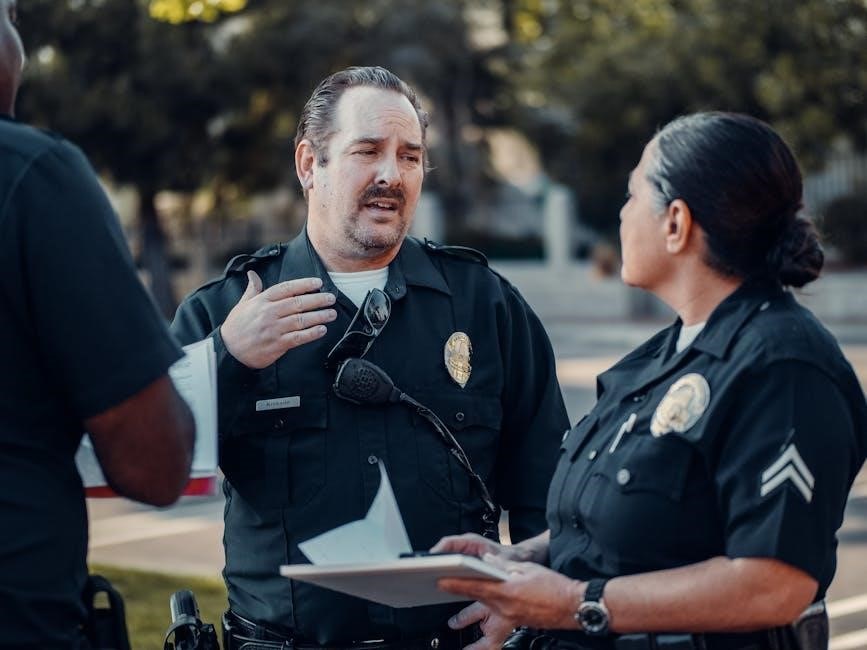
4.1 The Junior First Aid Badge Pamphlet
4.2 Volunteer Guides and Worksheets
4.3 Online Tutorials and Videos
Badge Classes and Training Opportunities
5.1 Red Cross Certification Classes

5.2 Troop Meeting Workshops
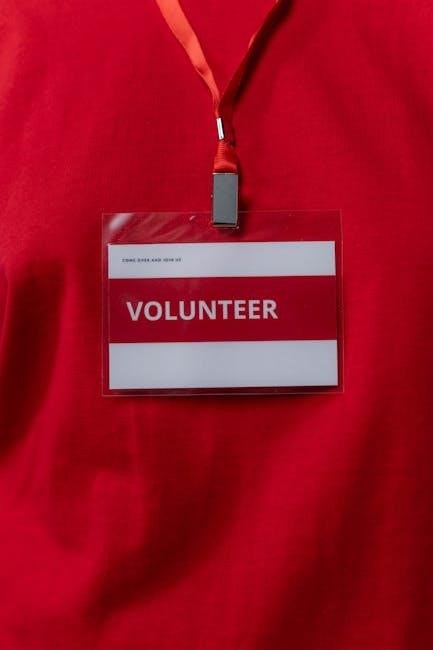
5.3 Scheduling and Cost Details

Advanced First Aid Topics for Older Girls
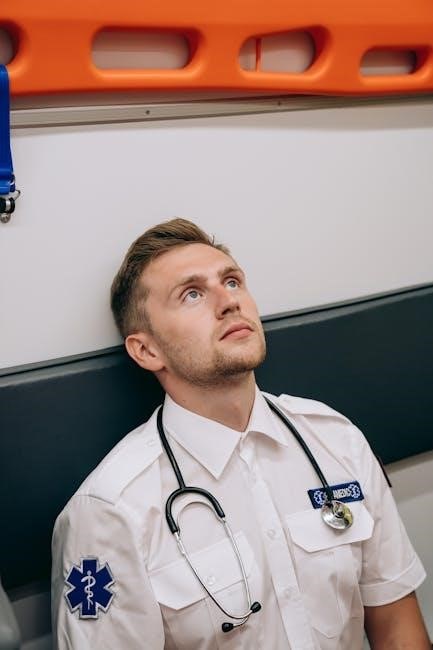
6.1 Cadette and Senior First Aid Badges
6.2 Wilderness First Aid and Emergency Preparedness